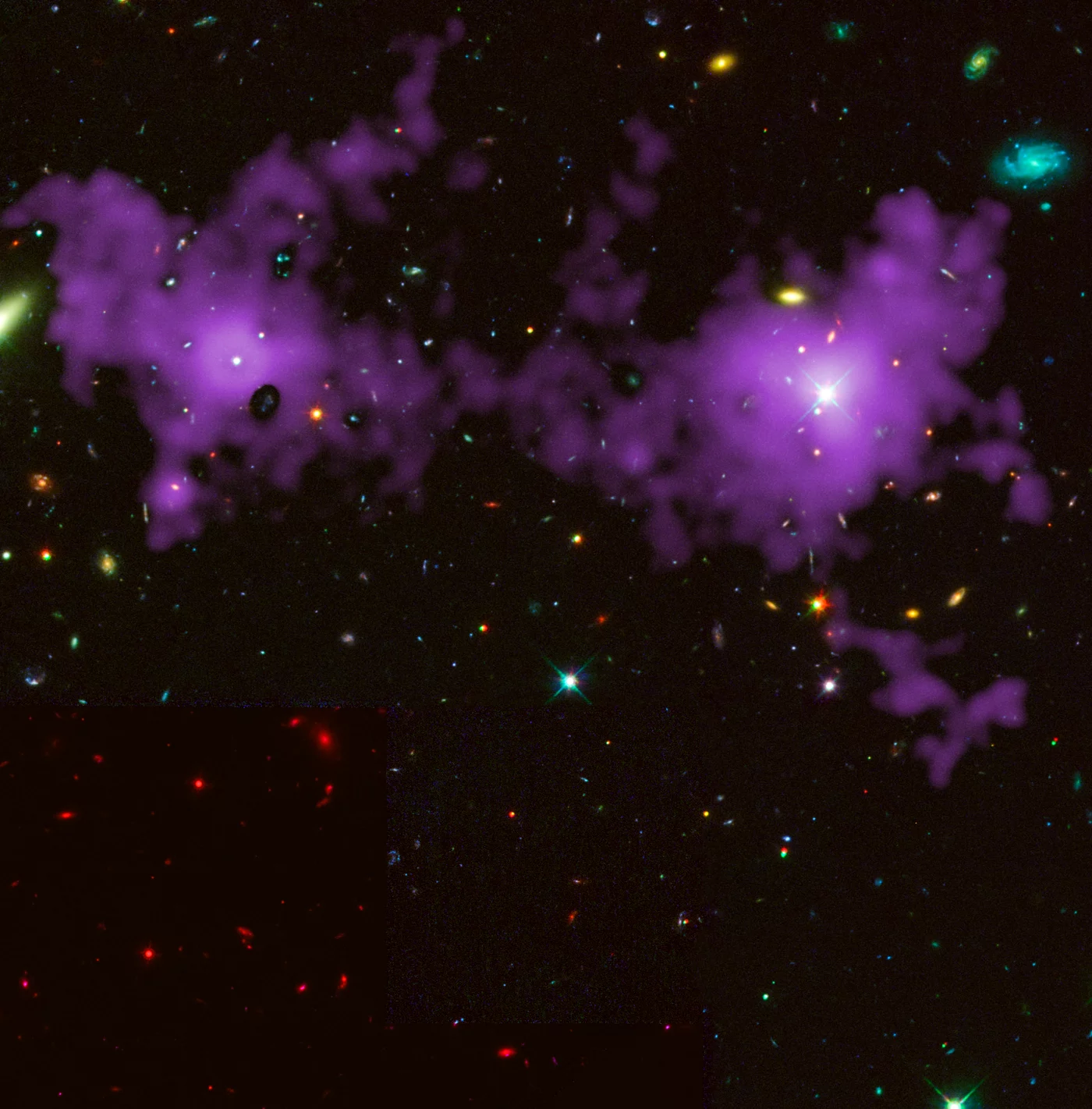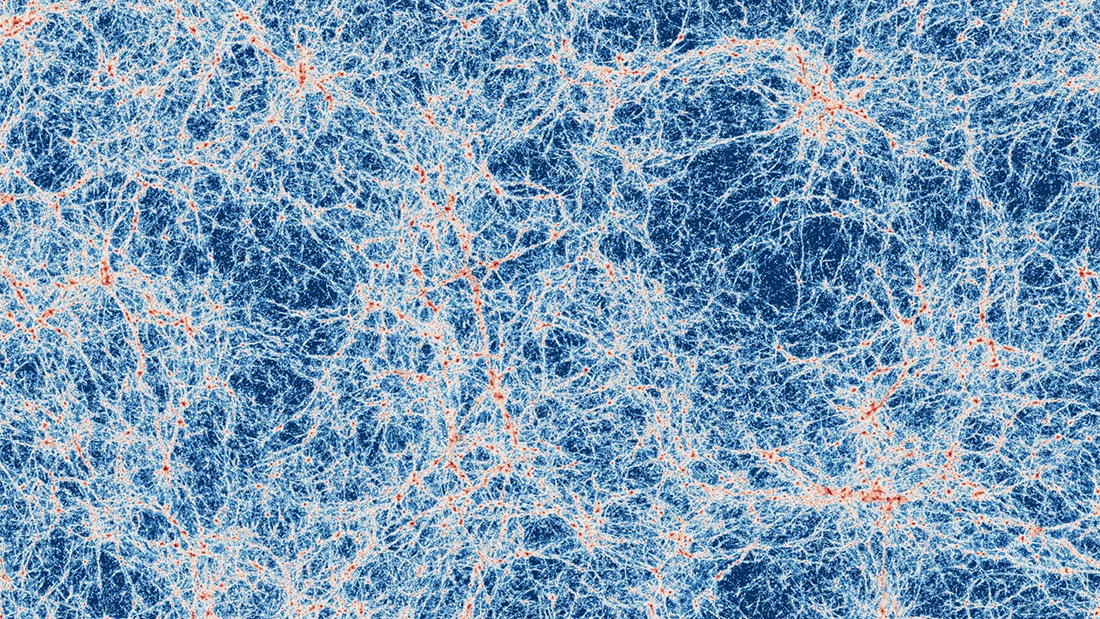Astronomers using the Very Large Telescope at the European Southern Observatory in Chile have imaged a filament of the cosmic web connecting two galaxies in unprecedented detail. Running simulations, the team says that the data collected lends further support to the current cold dark matter model of the universe.
ADVERTISEMENT GO AD FREE
As we study the universe more, we have found ourselves to be part of much larger structures. We orbit the Sun, the Sun is part of the Milky Way, the Milky Way is part of the Laniakea supercluster, and the Laniakea supercluster forms a tiny miniscule part of the cosmic web, aka the largest structure in the universe.
“Astronomers theorize that the early universe was very smooth, and that the distribution of matter was uniform with tiny variations in density that grew into a web-like pattern,” NASA explains of the cosmic web. “These areas of slightly higher density also had slightly more gravity to attract more matter. Over time, the universe evolved into a web of filaments and vast sheets, largely made of dark matter, which form the structure of the universe today.”
Though astronomers have come up with clever ways to image the gas flows within the cosmic web, using the background light of quasars, it is a particularly tricky task. The most abundant element within them – our old friend hydrogen, which makes up 75 percent of the universe’s baryonic matter – can only be detected faintly. For the task, the international team used the Multi-Unit Spectroscopic Explorer (MUSE) on the Very Large Telescope, imaging the same region of the sky over hundreds of hours.
The result is the image below, of a cosmic filament stretching across 3 million light-years, connecting two galaxies 12 billion years in the past. In the image, the galaxies in front and behind the cosmic filament are shown in color, while the cosmic filament itself is shown in purple.

Cosmic web filament connecting two galaxies. The filament is highlighted in purple.
Image credit: ©Joseph DePasquale/Space Telescope Science Institute
The image is the first time the cosmic web has been captured in such high-definition.
“By capturing the faint light emitted by this filament, which travelled for just under 12 billion years to reach Earth, we were able to precisely characterize its shape,” lead author and PhD student at the University of Milano-Bicocca, Davide Tornotti, said in a statement. “For the first time, we could trace the boundary between the gas residing in galaxies and the material contained within the cosmic web through direct measurements.”
ADVERTISEMENT GO AD FREE
As well as an awesome sight, it allowed the team to test standard model (dark energy, cold dark matter model of the universe) predictions about the cosmic web against observations. The team compared it to supercomputer simulations of expected filamentary emissions within the standard model, they found “substantial agreement”, according to Tornotti.

Simulation of the cosmic web, with gas within galaxies shown as red, and the web in white.
Image credit: ©Alejandro Benitez-Llambay/Universität Mailand-Bicocca/MPA
“The very deep observations unlock a high-definition view of the filament morphology, a measure of the transition radius between the intergalactic and circumgalactic medium, and the characterization of the surface brightness profiles along the filament and in the transverse direction,” the team write in their study. “Through systematic comparisons with simulations, we validate the filaments’ typical density predicted in the current cold-dark-matter model.”
While it is good for cold dark matter fans (let’s hear some noise) that these observations of the cosmic web align with the standard model, the work is far from done. In short, we need to get a lot more observations like this.
“We are thrilled by this direct, high-definition observation of a cosmic filament. But as people say in Bavaria: ‘Eine ist keine’ – one doesn’t count,” Fabrizio Arrigoni Battaia, an MPA staff scientist involved in the study, added. “So we are gathering further data to uncover more such structures, with the ultimate goal to have a comprehensive vision of how gas is distributed and flows in the cosmic web.”
ADVERTISEMENT GO AD FREE
The study is published in Nature Astronomy.
Source Link: Astronomers Capture Astonishing High-Definition Image Of Cosmic Web Connecting Two Galaxies